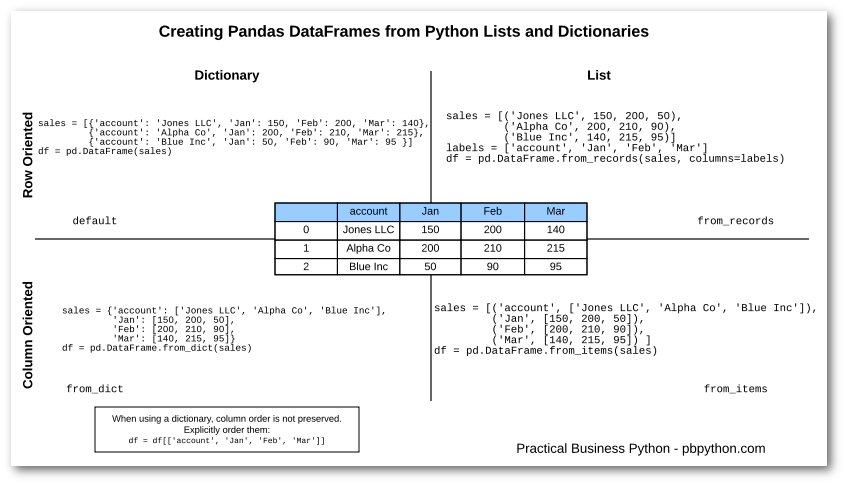pandas
For the sake of simplicity, I am not showing the OrderedDict approach because the from_items approach is probably a more likely real world solution.
If this is a little hard to read, you can also get the PDF version.
Simple Example This may seem like a lot of explaining for a simple concept. However, I frequently use these approaches to build small DataFrames that I combine with my more complicated analysis.
For one example, let’s say we want to save our DataFrame and include a footer so we know when it was created and who it was created by. This is much easier to do if we populate a DataFrame and write it to Excel than if we try to write individual cells to Excel.
Take our existing DataFrame:
sales = [('account', ['Jones LLC', 'Alpha Co', 'Blue Inc']),
('Jan', [150, 200, 50]),
('Feb', [200, 210, 90]),
('Mar', [140, 215, 95]),
]
df = pd.DataFrame.from_items(sales)
Now build a footer (in a column oriented manner):
from datetime import date
create_date = "{:%m-%d-%Y}".format(date.today())
created_by = "CM"
footer = [('Created by', [created_by]), ('Created on', [create_date]), ('Version', [1.1])]
df_footer = pd.DataFrame.from_items(footer)
Created by Created on Version 0 CM 09-05-2016 1.1
Combine into a single Excel sheet:
writer = pd.ExcelWriter('simple-report.xlsx', engine='xlsxwriter')
df.to_excel(writer, index=False)
df_footer.to_excel(writer, startrow=6, index=False)
writer.save()
